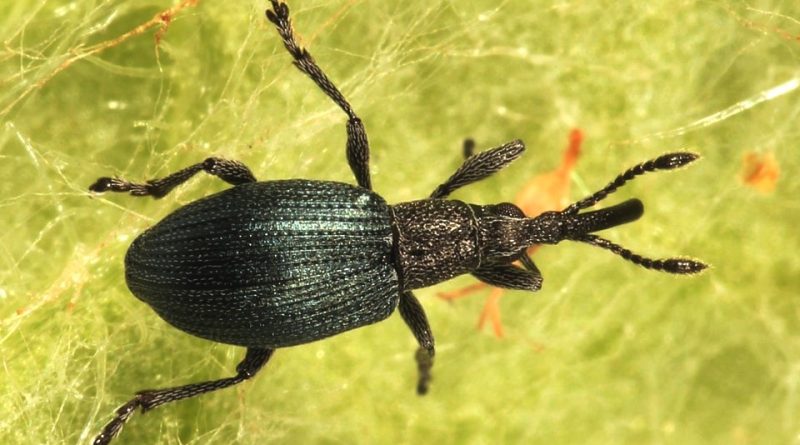Apion carduorum
Apion carduorum
The Apion of the artichoke (Apion carduorum Kirby, 1808) is a small beetle belonging to the Brentidae family.
Systematics –
From a systematic point of view, it belongs to the Eukaryota Domain, Animalia Kingdom, Subgenus Eumetazoa, Bilateria Branch, Phylum Arthropoda, Subphylum Tracheata, Superclass Hexapoda, Class Insecta, Subclass Pterygota, Cohort Endopterygota, Superorder Oligoneoptera, Section Coleopteroidea, Coleoptera Order, Suborder Polyphaga, Infraorder Cucujiformia, Superfamily Curculionoidea, Family Brentidae, Subfamily Apioninae and then to the genus Apion and to the species A. carduorum.
Geographical Distribution and Habitat –
The aporia of the artichoke is a small beetle originating from Europe that lives on Cardo, Artichoke and Topinambour.
Morphology –
Apion carduorum is a small Curculionide in which the adult is 2.8 to 3.4 mm long, with a brilliant blackish blue color on the dorsal layer and black on the belly layer; the larvae are white, curved, apode, with a globular yellow head armed with toothed mandibles.
Attitude and biological cycle –
The adults of the Apion carduorum overwinter in the cultivated areas among the host plants and ovide in the period between late April and May inside the stems and in the leaf veins, digging a well with the beak beak. The newborn larvae dig tunnels in the stems and in the large leaf veins, determining an irregular and stunted development of the flower heads and vegetation in general.
This phytophagous carries out only one generation a year.
The leaves invaded by these insects have pale spots, then turn yellow and decompose, especially those at the base of the plant. The flower heads develop badly, and do not even reach the normal size.
Ecological Role –
The Artichoke Apion is an insect that carries out its biological cycle on Artichoke, Thistle and Topinambour (Helianthus tuberosus); in these plants the adults feed on the leaves while the larvae dig longitudinal galleries in the petioles, in the large veins of the leaves and on the axis of the chapters; moreover these create a puppetry in June in the galleries.
The fight against this insect is carried out by intervening against the wintering adults before they lay on host plants.
Guido Bissanti
Sources
– Wikipedia, the free encyclopedia.- Russo G., 1976. Agrarian Entomology. Special Part. Liguori Editore, Naples.- Tremblay E., 1997. Applied entomology. Liguori Editore, Naples.

